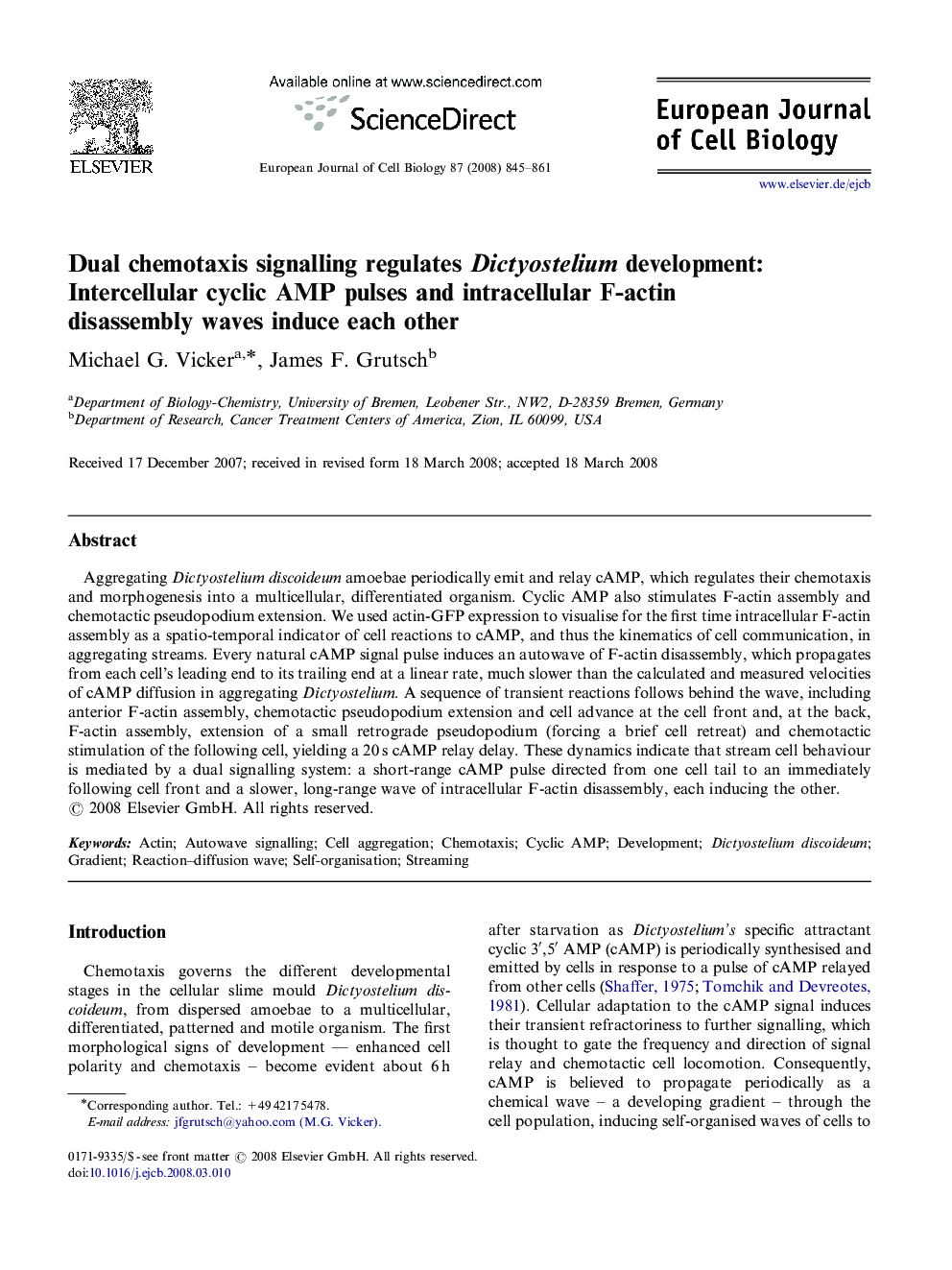| Article ID | Journal | Published Year | Pages | File Type |
|---|---|---|---|---|
| 2178924 | European Journal of Cell Biology | 2008 | 17 Pages |
Aggregating Dictyostelium discoideum amoebae periodically emit and relay cAMP, which regulates their chemotaxis and morphogenesis into a multicellular, differentiated organism. Cyclic AMP also stimulates F-actin assembly and chemotactic pseudopodium extension. We used actin-GFP expression to visualise for the first time intracellular F-actin assembly as a spatio-temporal indicator of cell reactions to cAMP, and thus the kinematics of cell communication, in aggregating streams. Every natural cAMP signal pulse induces an autowave of F-actin disassembly, which propagates from each cell's leading end to its trailing end at a linear rate, much slower than the calculated and measured velocities of cAMP diffusion in aggregating Dictyostelium. A sequence of transient reactions follows behind the wave, including anterior F-actin assembly, chemotactic pseudopodium extension and cell advance at the cell front and, at the back, F-actin assembly, extension of a small retrograde pseudopodium (forcing a brief cell retreat) and chemotactic stimulation of the following cell, yielding a 20 s cAMP relay delay. These dynamics indicate that stream cell behaviour is mediated by a dual signalling system: a short-range cAMP pulse directed from one cell tail to an immediately following cell front and a slower, long-range wave of intracellular F-actin disassembly, each inducing the other.
